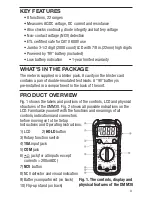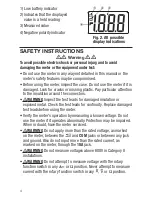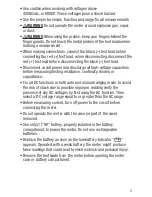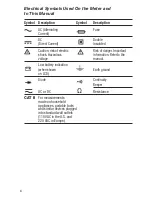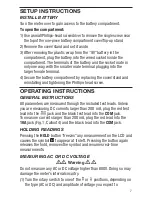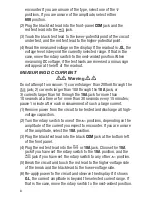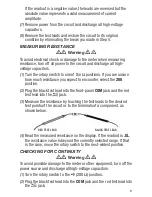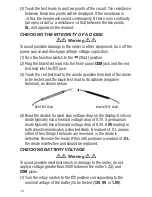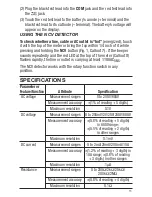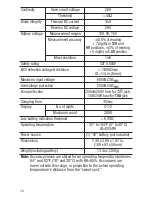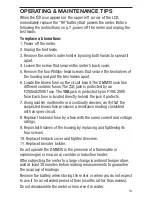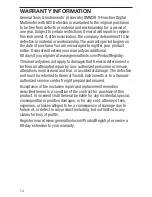
(3) Touch the test leads to any two points of the circuit. The resistance
between those two points will be displayed. If the resistance is
<40
Ω
, the beeper will sound continuously. If there is no continuity
(an open circuit or a resistance >40
Ω
) between the two points,
OL.
will appear on the readout.
CHECKING THE INTEGRITY OF A DIODE
••
Warning
••
To avoid possible damage to the meter or other equipment, turn off the
power source and discharge all high-voltage capacitors.
(1) Turn the function switch to the
(2k
Ω
) position.
(2) Plug the black test lead into the front-panel
COM
jack and the red
test lead into the
jack.
(3) Touch the red test lead to the anode (positive terminal) of the diode
to be tested and the black test lead to its cathode (negative
terminal), as shown below.
(4) Read the diode’s forward bias voltage drop on the display. A silicon
diode typically has a forward voltage drop of 0.7V. A germanium
diode typically has a forward voltage drop of 0.3V. A
0V
reading in
both directions indicates a shorted diode. A readout of .OL means
either of two things: the leads are reversed, or the diode is
defective. Reverse the leads. If this still produces a readout of
.OL
,
the diode is defective and should be replaced.
CHECKING BATTERY VOLTAGE
••
Warning
••
To avoid possible electrical shock or damage to the meter, do not
apply a voltage greater than 250V between the meter’s
and
COM
jacks.
(1) Turn the rotary switch to the
position corresponding to the
nominal voltage of the battery to be tested (
12V
,
9V
or
1.5V
).
10
RED TEST LEAD
BLACK TEST LEAD



